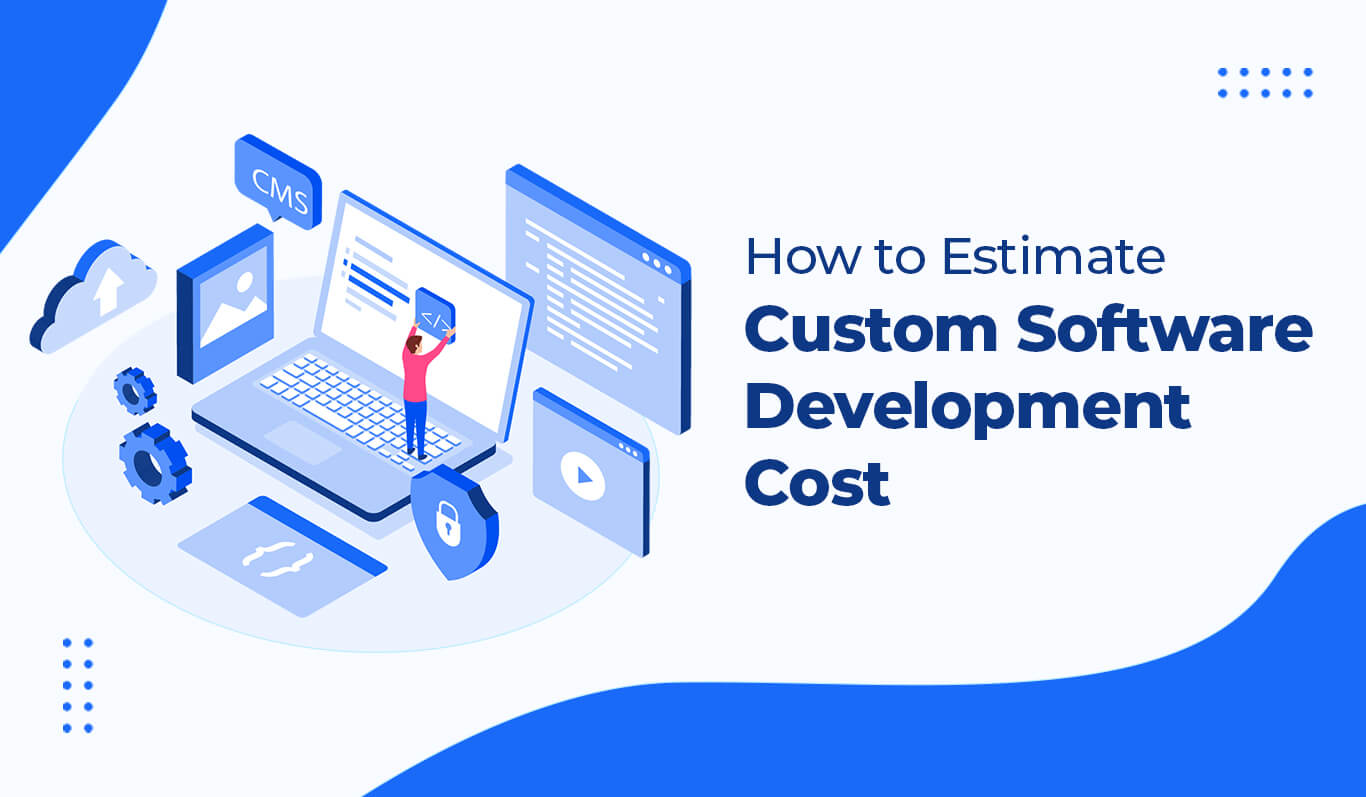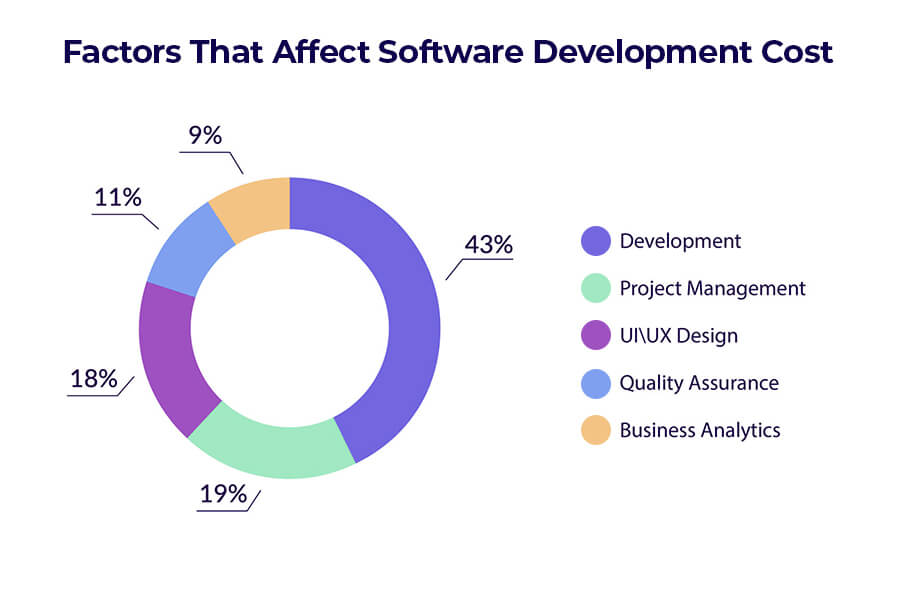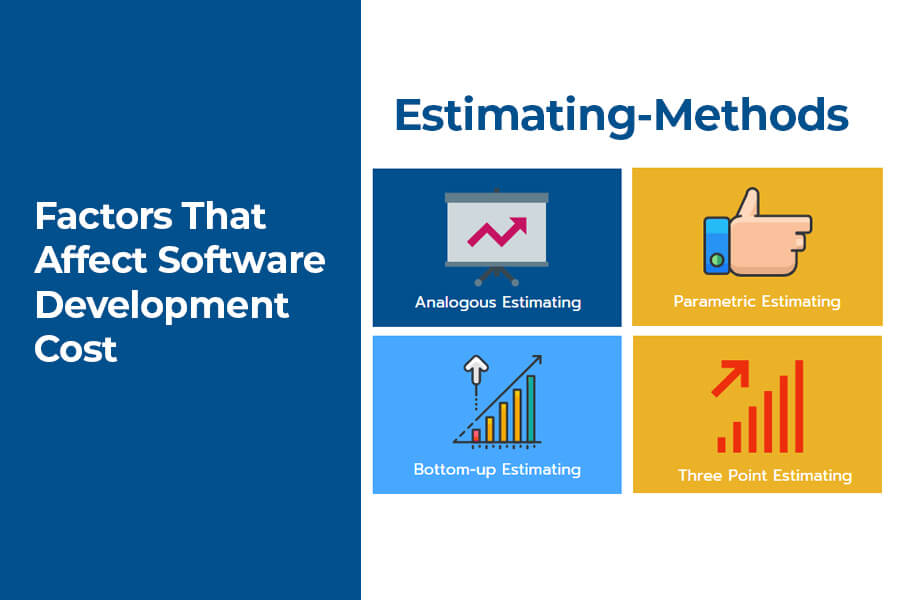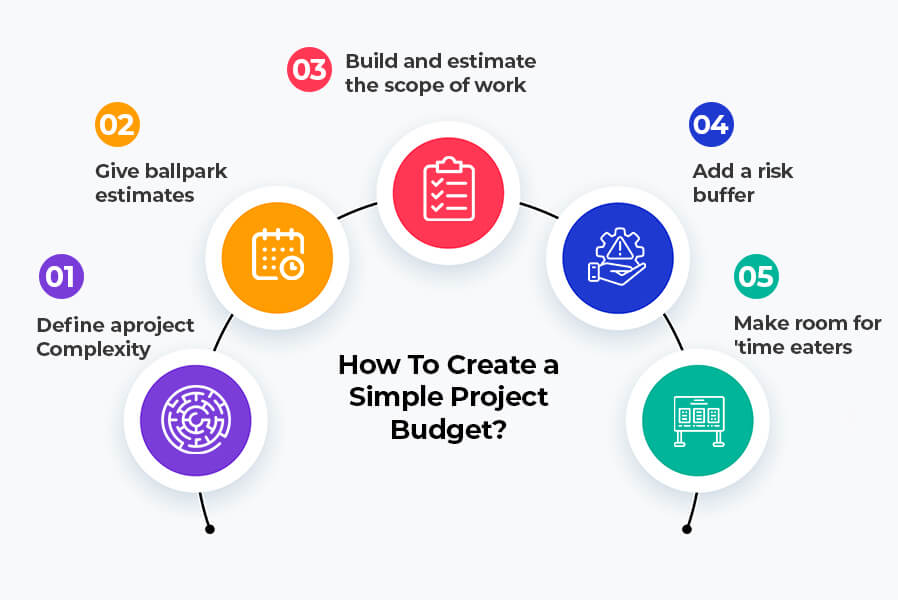How to Estimate Custom Software Development Cost?

Cost estimation helps you realize your goals within fixed financial limits given by the stakeholders. For a project to be deemed successful, an accurate estimation of the development cost is key.
Your software development cost can vary from $10,000 to $100,000 depending on the various factors we will be talking about in this article.
But There ain't a universal software development strategy that can be used alike by businesses of different scales across different industry verticals. As competition continues to increase with the evolution of digital transformation, businesses have hopped onto the 'tailored solutions' bandwagon to stay well ahead of the crowd. Being able to stand out in the market requires having unique, scalable, and personalized software solutions.
Having a software solution that can help boost your business revenue sounds great, but having one custom-made for your specific needs sounds even better. Therefore, estimating the cost of developing such software could save you a lot of trouble in the long run.
Before we go into how to estimate the cost of developing custom software for your business, let us first have a look at the factors that affect the cost of developing custom software.
Factors That Affect Software Development Cost

App functionality and code complexity
The functionality and complexity of your application are major factors that will determine how much money you allocate for your project. The simpler the application, the fewer resources it will require, and vice versa for a more complex app.
Depending on your application's goals, materials, expertise, and time will be needed. At the design stage, it is critical to predict and eliminate potential flaws and weaknesses arising from the complex structure of your future software system. As a result, it takes more time - and to do that, qualified software architects will be needed. As part of the design, coding, and quality assurance process for complex solutions, the products must undergo multiple levels of testing.
Factors such as the number of platforms, programming languages used, usage of advanced tech components like AI and IoT, data migration, etc increase the complexity of the application.
Cross-platform development will be needed to coordinate software solutions for platforms such as the web, desktop, mobile, and cloud. It is also crucial to hire skilled and experienced developers to use multiple programming languages, frameworks, libraries, additional software components, and API integrations.
If the data migration process is involved, it will require making sure the data format is appropriate. It will also require writing specific scripts to automate the migration, and other relevant data analytics and operations to prevent data loss. Needless to say, all of these efforts will add to the complexity and cost of development.
Size of the application
One of the most basic methods for measuring the size of your software is counting the screens.
- Small applications – 1 to 10+ screens - $5,000 to $20,000
- Mid-size applications – 20 to 40+ screens - $20,000 to $30,000
- Large applications – more than 50 screens - $30,000 to $100,000
Software size cannot be determined simply by the number of screens. As an example, different software screens may contain different features with varying levels of complexity, such as data fields, graphs, and other interactive elements. A software's size can be defined in terms of various factors such as:
- The maximum number of users or devices that can be connected at once.
- Whether the software is able to handle a large amount of data and perform high-performance tasks.
- The number of lines of code that developers and quality assurance engineers must write and test.
- Assembling numerous system components in a unified system requires thorough testing and development for each software module.
Design and User Experience
User experience (UX) is improved by well-designed software. This leads to increased productivity over time, saving you money. When forced to utilize a cumbersome, poorly-navigated system, employee morale and productivity will be negatively affected. The downside, as far as cost is concerned, is that high-quality UX/UI design isn't inexpensive or quick. Hiring a professional user interface designer is critical to designing and implementing a consistent user interface across all software screens.
Licensing fees
When you build custom software, you will create a completely new product. As a result, you may have to pay licensing fees to be able to run your app. Certification is vital to ensuring your developers follow the standards, as some things may not be permitted in your country. When the plan is completed, it is sent off for analysis so that certification may be obtained before any work begins. Once a project has been developed, it will be useless to discover it is illegal. The licenses must be acquired and paid for before work begins.
Software development company
Creating a custom software application will require everyone to be involved in its success. You will inevitably have to outsource unless your company specializes in software development. Developing in-house costs less, but several of your employees might be called away from their regular work schedules as they have to devote all their time to the project.
How Do You Calculate the Budget for A Software Project?

An estimation technique allows a project manager to estimate elements, such as cost and scope, within their projects. They can be applied to Agile IT operations to allocate resources effectively. These estimation techniques allow project managers to provide better forecasts to clients and budget funds and resources more efficiently.
Analogous Estimation
A project manager uses analogous estimating to determine the expected costs of a project based on the costs associated with previous projects of a similar nature. In this method of estimating, the project manager uses a combination of historical data and/or expert judgment.
There are limitations to analogous estimating because no two projects are identical. Due to this, it is often used to provide a rough estimate during the early stages of planning a project. Estimating using analogy can also be done when very little information is available about a project.
Parametric Estimation
Using historical trends and statistical modelling, parametric estimating assigns monetary values to certain costs. By this approach, the unit cost of a particular component of the project is determined and then scaled as required. This approach is much more precise than analogous estimating but requires more initial data for accuracy.
Bottom-Up Estimation
An entire project is divided into a series of smaller components in bottom-up estimating. Project managers evaluate the costs of each of the smaller components individually. For instance, if the work of a project is distributed among different sections of an organization, then the cost of creating the project will be the summation of all those costs. Using bottom-up estimating allows project managers to assess individual tasks within a project in greater detail, which allows for more accurate estimates.
Three-Point Estimation
When a project manager applies three-point estimating, he or she identifies three separate estimates for the costs involved. First, the best-case scenario shows work being completed with the funds being efficiently spent. In the second, the worst-case scenario, it shows work being completed but the management of funds is inefficient, and the third and most likely-to-happen scenario sits somewhere in the middle of the first two.
How To Create a Simple Project Budget?

Using one of the four methods listed above is the optimal way to calculate the budget for your project. You can also get a rough estimate based on the following steps:
- Create a project scope and list the tasks that need to be done separating each task by milestones to be achieved.
- Once you have listed the tasks, assign a value to each based on the resources, tools, and technologies that will be needed for task completion.
- Sum up the estimates of tasks.
- Risk is part of any project; therefore, it is wise to assume the worst-case scenario where an undesirable situation could arise during project creation. Allocate a budget of say 5 to 10% for any such contingency and also tax.
Conclusion
Estimates are crucial for planning your project, but without them, it is impossible. The only way you can plan ahead is by knowing the number of resources, tools, and budget for a project. Without it you will end up holding a very long bill indeed. When you deal with an end-to-end software design and development company like Neetable, you get a turnkey customer service experience with everything you need to develop a successful software solution that is cost-efficient and fulfils your project goals.
FAQs
What is meant by software cost estimation?
Estimating software cost entails the process of calculating the probable cost of a project based on information such as the resources required, the technology used, the time taken for completing each task, etc.
What are software development costs?
Software cost is cost associated with the number of resources, time taken, and the technology stack used to successfully build a project.
How much does software development cost?
Based on our experience we could say that the cost of custom software would come in the range of $40,000 to $100,000. Although, you have to know that no two custom software can be alike. For example, a custom software built for a start-up could vary in functionality and complexity from an enterprise-level software solution.
How do you calculate budget for a software project?
- Create a project scope.
- Calculate estimate for each task.
- Include maintenance, hosting, and licensing costs.
- Include cost for contingencies and tax.
Request a Quote
Categories
Popular posts
Best Practices for Software Product Engineering Every CTO Should Implement
2023-14-18How to Build Your Own On-Demand Carpooling App Services?
2023-08-25How to Start an On-Demand Fuel Delivery Business: A Comprehensive Guide
2023-07-28Empowering Miners: How Fleet Management Apps are Transforming the Mining Industry?
2023-07-21A Complete Guide to Develop a Food Delivery App for Restaurants in 2023
2023-07-08Mobile Apps Transforming the Travel Industry: A Game-Changer in Travel Planning and Experience
2023-07-07
